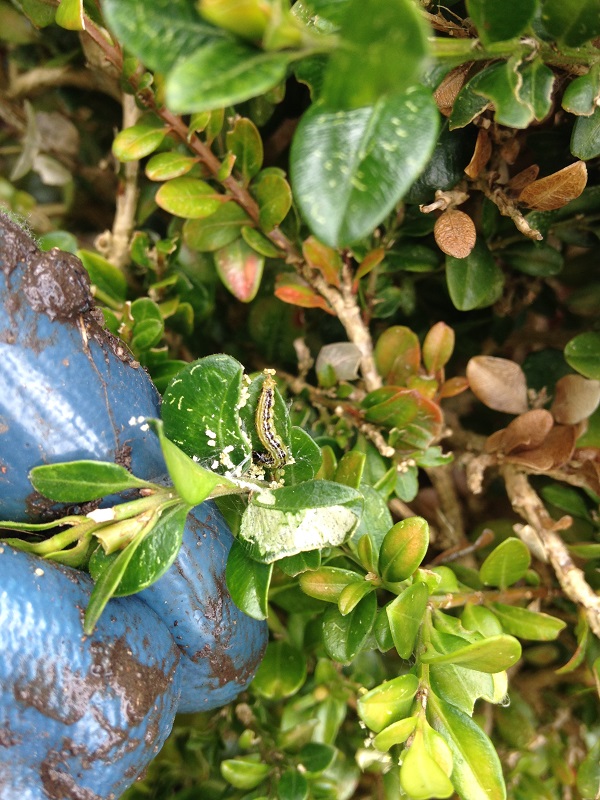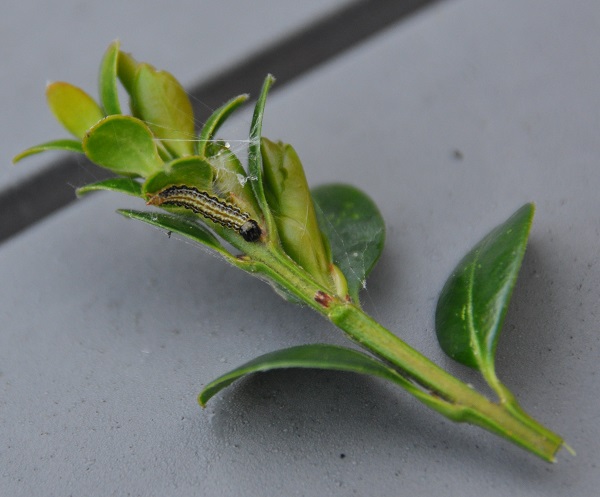Working in a garden in Alton (Hampshire) last week I discovered Box tree caterpillar (Cydalima perspectalis ), it was merrily spinning silk and munching on the leaves, secure in the fact that most gardeners would not notice its presence for some while yet. If it hadn’t been for two sick looking plants, it would have been safe… considering this cold blustery weather on 8th of March when most of us are staying in the warm. So this is a warning to other gardeners in the Home Counties – caterpillars are already 1cm long and eating voraciously!
The clipped box in this small garden are designed to be low maintenance providing all year round structure (along with Alliums and Hydrangea). Box blight (Cylindrocladium buxicola ) has always been the main fear but this additional problem requires a re-think…
First it is imperative to understand the life cycle of this pest. According to the RHS “The biology of the box tree caterpillar in the UK is not yet fully known, as it is a recent discovery here, but it may have two or three generations per year. It overwinters as small caterpillars, hidden between box leaves that have been spun together with silk in autumn, and completes its development in spring. The adult moth is capable of flight, but it is not known how far it can travel”.


Well that helps a bit. I understand from a colleague that the adult moth lays its eggs on the surface of the box plant (because box tends to be dense), the young caterpillars therefore hatch on the surface of the plant where they feed initially (a good opportunity to spot them/ pick them off/ spray them). As the caterpillars get bigger (up to approximately 2.5cm) they have greater ability to get about and can move deeper into the plant out of sight and making contact spray applications impracticable.
Options for consideration in this garden:
1 / Spray pesticide now (but this would have to be a systemic neonicotinoid which is not environmentally friendly)
2/ Remove caterpillars by hand (this requires great dedication, is not very pleasant and may not be practical)
3/ Use pheromone traps against the adult moths however this means that the caterpillars will be allowed to munch away until they reach pupation and may well defoliate the plants in the meantime
4/ Spray on Bacillus thuringiensis now whilst the caterpillars are small, on the surface of the plant and there is not too much silky webbing present
5/ Look at replacing the box plants with alternatives as they die-back which is probably the most sensible approach since box moth is all around the Home Counties.
I have decided on options 4 and 5 and have replaced two of the box plants with Pittosporum ‘Tom Thumb’. From now on I need to make a note in my diary to check the plants and spray with Baccillus thuringiensis
